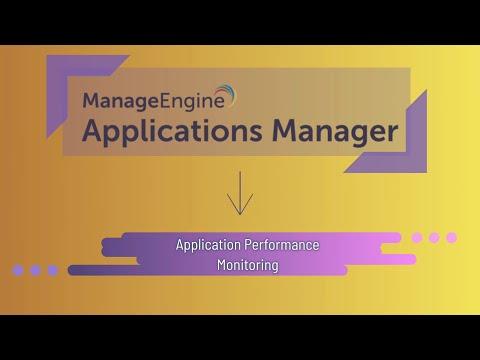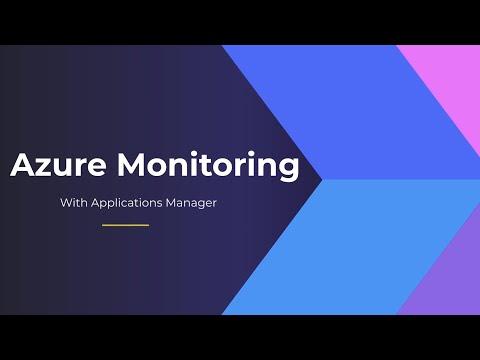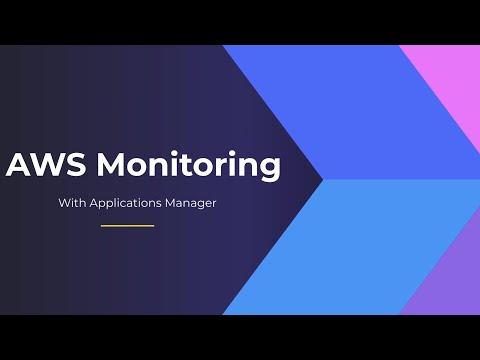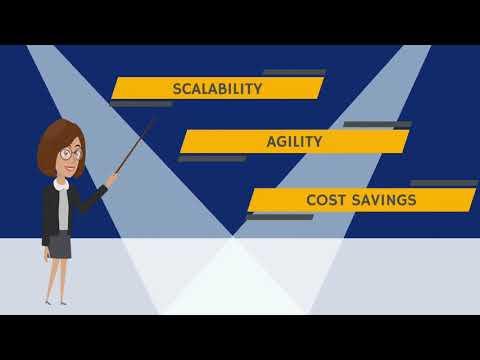Since Application Performance Management (APM) is a major focus of APMdigest, in Part 6 we investigate the relationship between OpenTelemetry and APM. This leads to some important questions:
How is OpenTelemetry different from APM?
Do you need both, or does OpenTelemetry replace APM?
Start with: A Guide to OpenTelemetry — Part 1
Start with: A Guide to OpenTelemetry — Part 2: When Will OTel Be Ready?
Start with: A Guide to OpenTelemetry — Part 3: The Advantages
Start with: A Guide to OpenTelemetry — Part 4: The Results
Start with: A Guide to OpenTelemetry — Part 5: The Challenges
APM Evolution Drives OpenTelemetry
According to Sajai Krishnan, General Manager, Observability, Elastic, OpenTelemetry has been driven by APM's evolution. "APM solutions were a revolution when they first appeared: organizations could finally see exactly what their applications were doing — and they could measure it. A new class of vendors was born, developing proprietary instrumentation techniques."
Download the 2022 Gartner Magic Quadrant for APM and Observability
"APM was a good start, but it soon became apparent, as applications moved to cloud-native distributed architectures, that it would not sufficiently scale," Krishnan continues. "APM vendors could not handle the amount of data that some customers were generating even 2 or 3 years ago. Customers began building their own solutions, which needed to be backed by a scalable datastore, and this proliferation of custom solutions created the need for standards. As a result, OpenTelemetry (or OpenCensus as it was called back in those days) came into the picture."
Krishnan says the development of value-added tools, like distributed tracing, triggered a second revolution. "Google set the industry down this path with their infamous Dapper paper about large-scale distributed tracing. The standards continue to evolve and include logs and metrics under the OpenTelemetry umbrella. However, the movement started with APM."
APM + OpenTelemetry: Working Together
Down the road, many experts see OpenTelemetry as an essential support for APM, feeding more data and potential insight into APM tools than was ever possible before.
"OpenTelemetry is first and foremost a solution for collecting telemetry data from applications and as such, is a data source for all APM solutions, regardless if they claim to provide observability or not," says Daniel Khan, Director of Product Management (Telemetry) at Sentry.
"APM tools can provide support for OpenTelemetry data formats," adds Pranay Prateek, Co-Founder of SigNoz. "As OpenTelemetry provides support for all telemetry signals — logs, metrics and traces — an APM tool can be based entirely on OpenTelemetry."
"OpenTelemetry will play a central role in APM," confirms Nitin Navare, CTO of LogicMonitor. "For typical IT operations management use cases, there are mature protocols such as SNMP, WMI, JMX, SSH, etc. However, for application requests/response telemetry, there has been no standard, and OTLP is fast becoming the de facto standard for exposing such data. Hence, APM and OpenTelemetry will go hand-in-hand in the long run."
"OpenTelemetry provides a more comprehensive stream of traces and metrics as input data for APM platforms to do their AI-magic and connect business metrics with their underlying software technologies," says Torsten Volk, Managing Research Director, Containers, DevOps, Machine Learning and Artificial Intelligence, at Enterprise Management Associates (EMA). "The more comprehensive the instrumentation, typically auto instrumentation plus some level of manual instrumentation to connect app code to infrastructure, the more this additional data can deliver relevant context for an APM to better monitor applications in a business centric manner."
APM and OpenTelemetry seem to complement each other well. Maybe OpenTelemetry is exactly what APM needs to become the go-to solution for observability.
Cedric Ziel, Grafana Labs Senior Product Manager, says, "A consistent naming of key-metrics and attributes as well as a homogenous protocol will lead to analysis tools in the APM space becoming specialized in providing insights for OTel data. By this, OpenTelemetry can be viewed as the tool that provides a solid foundation for APM providers."
"In the future, we could see even more convergence, where it's less about APM and more about observability — a world where all of this data comes together using OpenTelemetry and is analyzed in context together," Krishnan from Elastic asserts. "OpenTelemetry-friendly vendors will have clean ways to co-exist with agent-based APM and OpenTelemetry, without duplication and with clean context-sharing. And while we aren't quite there yet as an industry, we may continue to see APM merging into the broader umbrella of observability."
APM's Evolution Away from Vendor Lock-in
Over time, OpenTelemetry may be able to help APM technology grow out of the current state of vendor lock-in.
"One of the biggest criticisms of APM tools is the potential for vendor lock in and having vital data that is siloed from the rest of your applications analytics," explains Jim Rapoza, VP and Principal Analyst at Aberdeen Strategy & Research, a division of Spiceworks Ziff Davis. "Many APM vendors understand this weakness and also know that being able to work seamlessly across applications and cloud-native services is a must have for modern DevOps teams. This is why we are seeing many major APM vendors supporting OpenTelemetry in order to integrate their platforms into today's cloud-native application environments."
"APM has always worked with traces, metrics, and logs to derive meaningful information," adds Alois Reitbauer, Chief Product Officer at Dynatrace. "However, the data sources used to be mostly proprietary. OpenTelemetry is changing this and moving towards a more unified way of ingesting data. This means data for new technologies will be available faster since they do not require a dedicated effort from the APM vendor whenever it is provided by the framework or middleware technology."
Replacing APM with OpenTelemetry
Other experts feel that OpenTelemetry could replace at least parts of what APM does.
"For many, APM is a black box and provides an even more narrow and opinionated set of statistics about your application," says Martin Thwaites, Developer Advocate at Honeycomb. "Tracing and the other types of signals offer a much more granular and helpful set of data to allow you to see more bespoke and actionable data. As OpenTelemetry starts to look at standardizing the Profiling space, we'll see even more signals that will remove the need for the Traditional APM tooling, focusing on more modern observability tools."
"A combination of tracing and profiling, powered by OpenTelemetry, can replace traditional APM use cases with more relevant and higher-resolution transactional data," Austin Parker, Head of Developer Relations at Lightstep by ServiceNow, agrees.
However, it is important to remember that APM can provide the backend visualization and analysis component that is missing in OpenTelemetry. Without APM, some other backend solution will still be necessary.
Joe Byrne, VP of Technology Strategy and Executive CTO at Cisco AppDynamics, points out that APM is still needed, however: "OpenTelemetry is capable of collecting and generating data from even the most complex environments in the IT stack, but separate tools are often required to turn the data into actionable insights. OpenTelemetry does not give insight into the actual application itself. Seeing the specific calls or transactions and the data associated with them which allows deeper business insights still requires a solid APM solution. Ultimately, it's only when you can pair the inside out view given by APM with the outside in view provided by OpenTelemetry that really gives the observability people want and need."
The Latest
Industry experts offer predictions on how NetOps, Network Performance Management, Network Observability and related technologies will evolve and impact business in 2025 ...
In APMdigest's 2025 Predictions Series, industry experts offer predictions on how Observability and related technologies will evolve and impact business in 2025. Part 6 covers cloud, the edge and IT outages ...
In APMdigest's 2025 Predictions Series, industry experts offer predictions on how Observability and related technologies will evolve and impact business in 2025. Part 5 covers user experience, Digital Experience Management (DEM) and the hybrid workforce ...
In APMdigest's 2025 Predictions Series, industry experts offer predictions on how Observability and related technologies will evolve and impact business in 2025. Part 4 covers logs and Observability data ...
In APMdigest's 2025 Predictions Series, industry experts offer predictions on how Observability and related technologies will evolve and impact business in 2025. Part 3 covers OpenTelemetry, DevOps and more ...
In APMdigest's 2025 Predictions Series, industry experts offer predictions on how Observability and related technologies will evolve and impact business in 2025. Part 2 covers AI's impact on Observability, including AI Observability, AI-Powered Observability and AIOps ...
The Holiday Season means it is time for APMdigest's annual list of predictions, covering IT performance topics. Industry experts — from analysts and consultants to the top vendors — offer thoughtful, insightful, and often controversial predictions on how Observability, APM, AIOps and related technologies will evolve and impact business in 2025 ...
Technology leaders will invest in AI-driven customer experience (CX) strategies in the year ahead as they build more dynamic, relevant and meaningful connections with their target audiences ... As AI shifts the CX paradigm from reactive to proactive, tech leaders and their teams will embrace these five AI-driven strategies that will improve customer support and cybersecurity while providing smoother, more reliable service offerings ...
We're at a critical inflection point in the data landscape. In our recent survey of executive leaders in the data space — The State of Data Observability in 2024 — we found that while 92% of organizations now consider data reliability core to their strategy, most still struggle with fundamental visibility challenges ...










